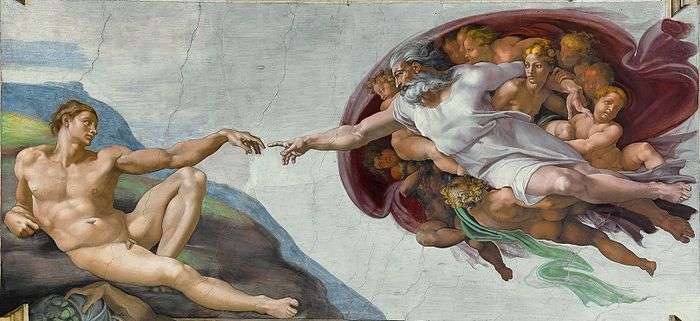Geoscience Research Institute
| Part of a series on | ||||
| Creationism | ||||
|---|---|---|---|---|
 | ||||
| Types | ||||
| Biblical cosmology | ||||
| Creation science | ||||
| Creation–evolution controversy | ||||
| Religious views | ||||
|
||||
| ||||
The Geoscience Research Institute (GRI), founded in 1958 and currently located on the campus of Loma Linda University in California, is an official institute of the Seventh-day Adventist Church that specializes in the study of creation science and serves the church through research and communication. The institute employed four PhD researchers as of late 2015.[1]
History
The Geoscience Research Institute owes its existence to Adventist science teachers in the late 1950s who were concerned about a lack of Adventists credentialed in the Earth sciences. The church responded to their concerns in 1957 by forming the Committee on the Teaching of Geology and Paleontology, which selected biologist Frank Lewis Marsh and chemist P. Edgar Hare to inaugurate courses in those fields. The GRI was officially founded in 1958[2] and was originally located on the campus of Andrews University in Michigan.[3]
After comparative anatomist and paleontologist Richard M. Ritland was added to the group in 1960, differences in approach soon led to disagreements over whether it was permissible to reinterpret biblical and prophetic accounts in light of scientific evidence, with Hare and Ritland supporting that view while Marsh favored the historic Adventist interpretations. After a number of years of acrimony, Hare decided in 1964 to remain with the Carnegie Institution, where he had gone to conduct laboratory studies. Although Hare chose to continue in the Adventist church, his views leaned toward theistic evolution. Also in 1964, Ritland outmaneuvered Marsh to become the head of the institute, and Marsh was transferred to Andrews University.
By the late 1960s, Ritland's more flexible approach fell out of favor with a new and more doctrinally rigid church president, Robert H. Pierson, who laid down the following guidelines:[4]
| “ | In our controversy with proponents of the evolution theory, we must keep in clear perspective — the Bible and the Spirit of Prophecy are not on trial. | ” |
Such constraints led Ritland to resign as GRI director in 1970 and join Marsh in the biology department at Andrews University. Ritland was replaced by Robert H. Brown, a physicist who eagerly committed the institute to the more apologetic mission of showing that Earth "originated within six consecutive rotations of the planet" no more than 10,000 years ago and "experienced a universal destruction as portrayed in Genesis 6-8."
Brown was fascinated by radioactive time clocks. He dismissed radiocarbon dating that contradicted church doctrine but embraced evidence suggesting that the raw materials of Earth were billions of years old. His views, described as "schizoid" by science historian Ronald Numbers, displeased both young-Earth conservatives such as Marsh and Robert V. Gentry and liberals such as Ritland and Hare. Numbers nevertheless states that Brown's achievements included "polishing the tarnished image of creationism," especially compared to the "sometimes slipshod presentations" of the Institute for Creation Research.[4]
Brown's successor, Ariel A. Roth, moved the institute to Loma Linda University in 1980. Both Brown and Roth dedicated the institute to salvaging flood geology and repeatedly dismissed scientists skeptical of its credibility.[4]
Notes
- ↑ Home Office Staff: Geoscience Research Institute
- ↑ About GRI: Geoscience Research Institute
- ↑ Land, Gary (2005). Historical Dictionary of Seventh-Day Adventists. Lanham, Maryland: Scarecrow Press. p. 112. ISBN 0-8108-5345-0.
- 1 2 3 Numbers (2006), p320-327
References
- Numbers, Ronald (Nov 30, 2006). The Creationists: From Scientific Creationism to Intelligent Design, Expanded Edition. Harvard University Press. pp. 624 pages. ISBN 0-674-02339-0.
External links
- Official website
- McIver, Thomas Allen (1989), "Creationism: Intellectual Origins, Cultural Context,and Theoretical Diversity, section: The Geoscience Research Institute", PhD Dissertation, Anthropology, University of California, Los Angeles: 85–88